Bell peppers (capsicum, sweet pepper) originated from Mexico and South America. When you set out bell peppers two weeks after the last frost, you can enjoy in an exciting color change from green, yellow, orange, to red.
Moreover, with a new color, your vegetable will get more vitamin C and become more delicious. You can grow them from seeds or buy seedlings from a local garden shop.
Varieties of Bell Peppers
You can pick out any of numerous types of bell peppers on the market. Some of the most popular are:
1. Canary bell
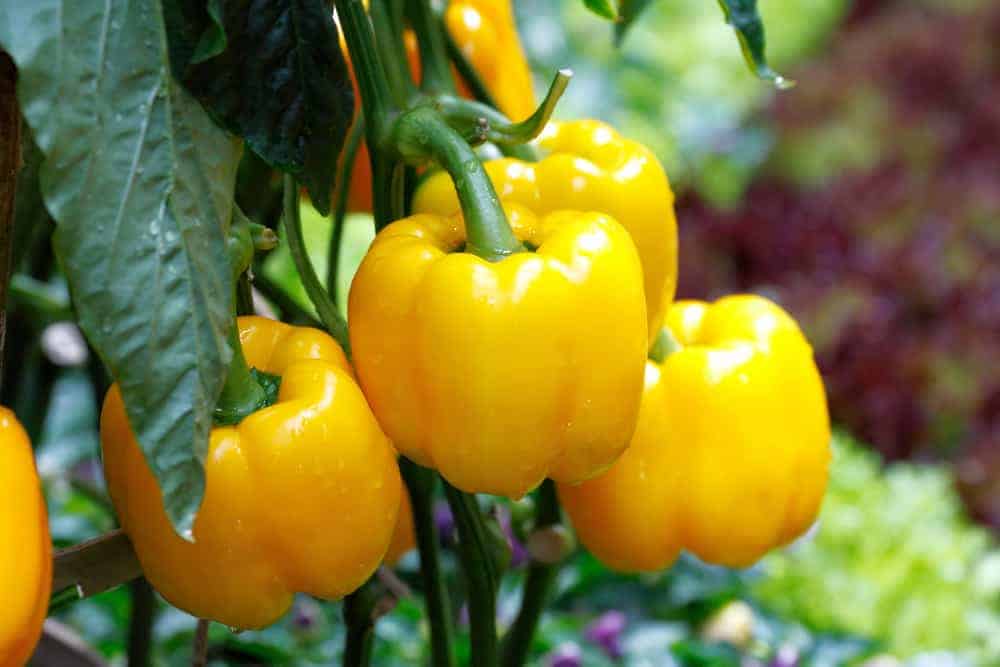
This fantastic yellow bell pepper needs approximately 100 days to reach full maturity. You can expect fruits at least 3.5 to 4 inches (8.9 – 10 cm) long.
2. California wonder
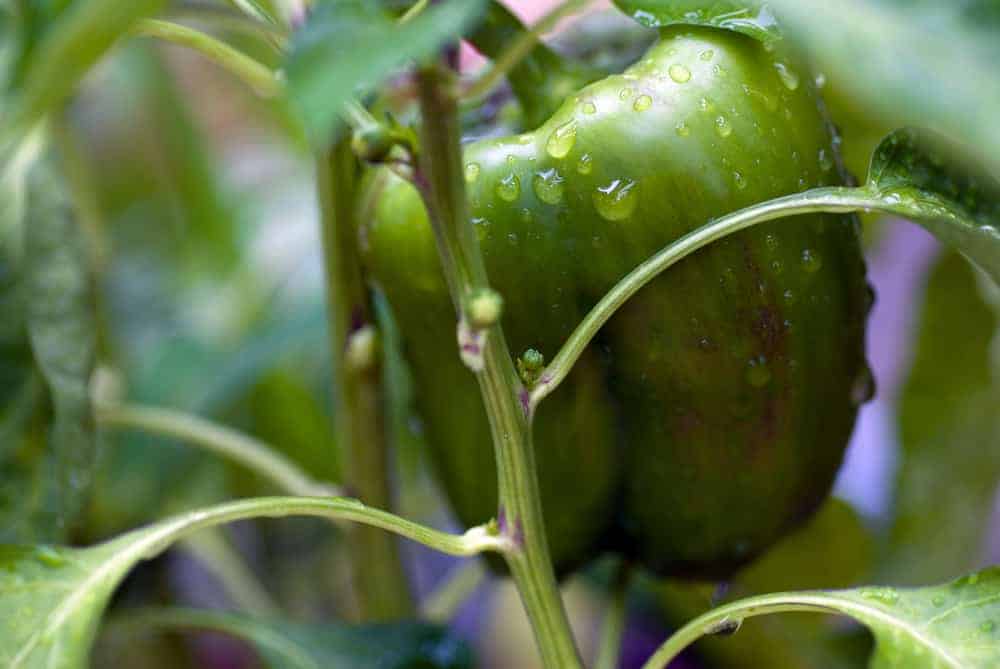
This mosaic virus-resistant type of bell peppers is delicious even when it is green. However, it will be the tastiest when become fully ripen after approximately 75 days of planting. This type is one of the biggest with fruits 4 to 4.5 inches (10 – 11.5 cm) large.
3. Big red
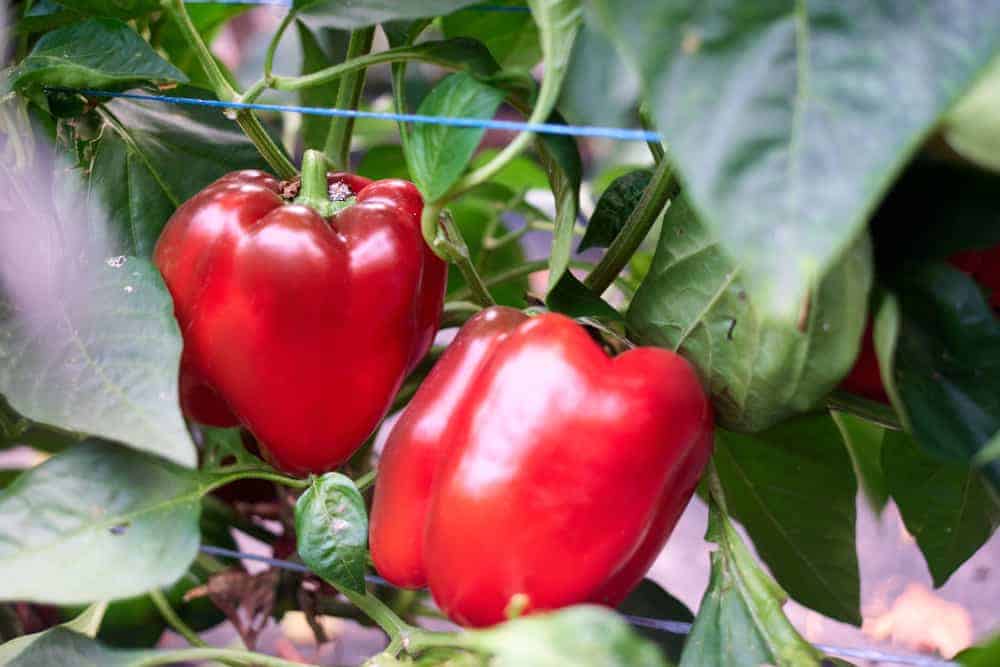
You can harvest these fantastic red bell peppers after 75 days of growing. Then, you can enjoy in thick flesh of their 3 to 4 inches (7.6 – 10 cm) large fruits.
4. Coral bell
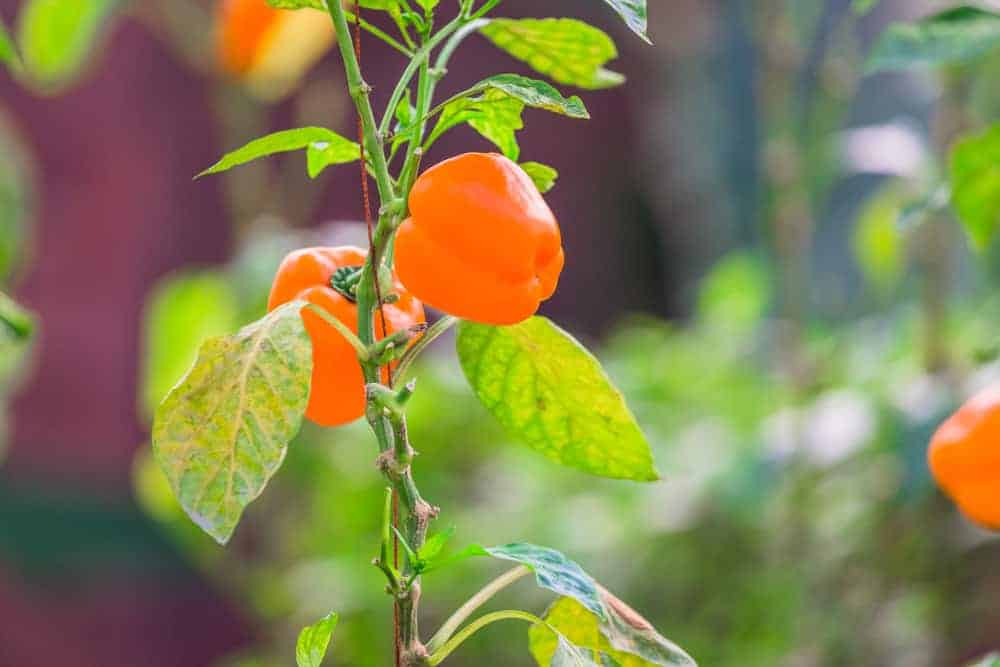
This variety thrives and produces orange fruits that reach 3.5 to 4 inches (8.9 – 10 cm) when they are entirely mature. You can harvest them 78 to 88 days after planting.
5. Chocolate Beauty
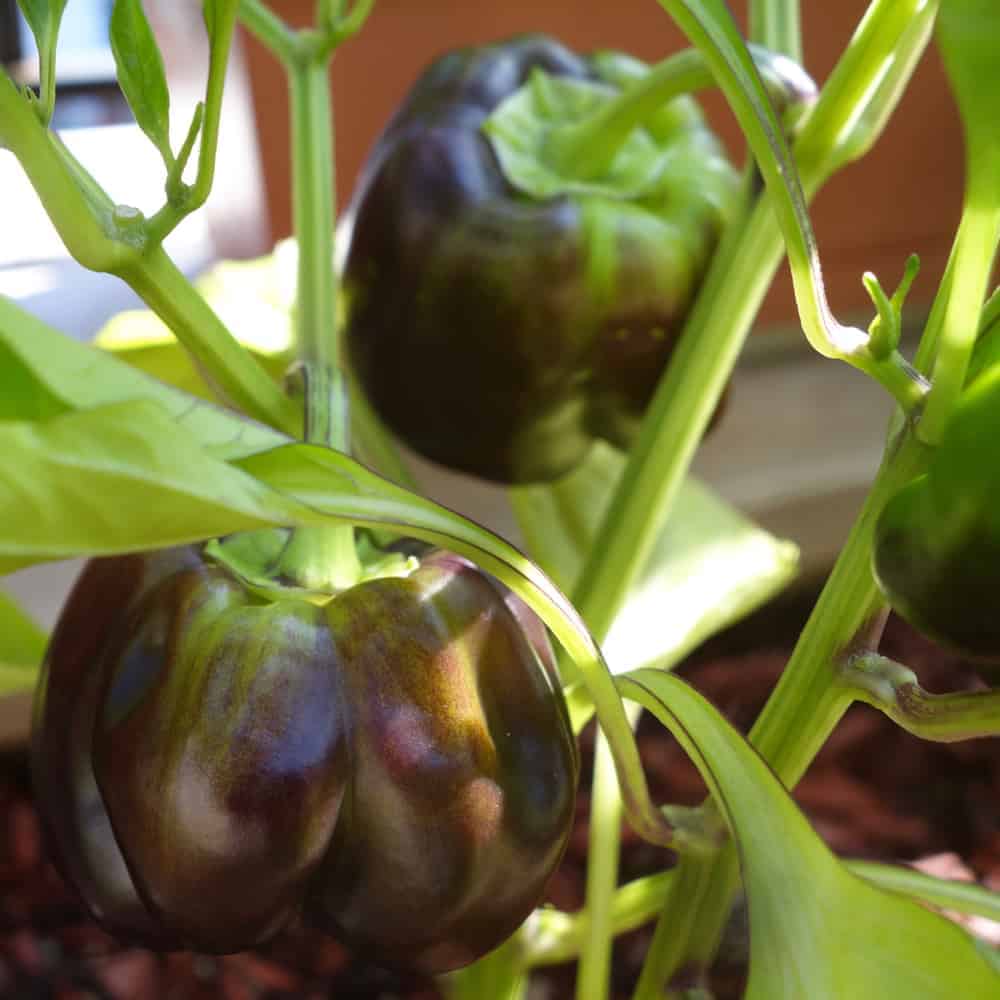
These deep brown, tobacco mosaic virus-resistant, mouth-watering bell peppers with highly sweet flesh need just 67 to 70 days to grow.
6. Purple Beauty
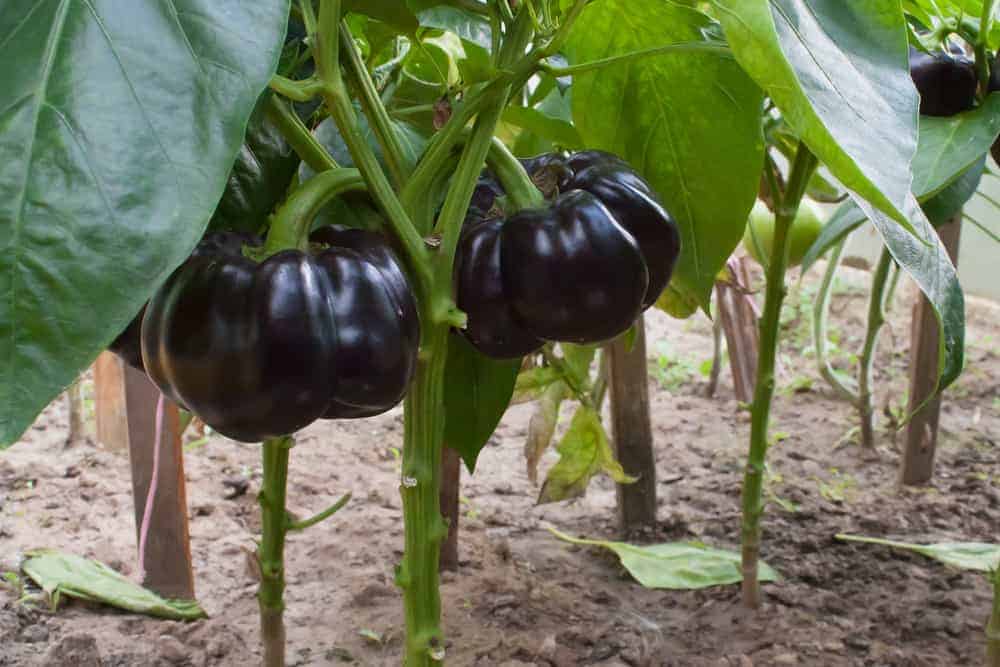
Enjoy these deeply purple heirloom peppers which have 3 to 4 inches (7.6 – 10 cm) large fruits with thick walls. They need 70 days to reach maturity.
Health Benefits of Bell Peppers
Bell peppers may have a lot of health benefits on our body.
- Source of valuable nutrients – Except for vitamin C, bell peppers are well-known as a source of vitamin A, vitamin B6, and vitamin B9 (folate).
- Antioxidants – Thanks to a high level of antioxidants, bell peppers may prevent most infections and even cancer.
- Eye health – This vegetable may prevent cataracts and macular degeneration thanks to carotenoids (such as zeaxanthin and lutein) they contain.
- Anemia prevention – Red bell peppers contain iron and vitamin C, which raises its absorption. As a result, consuming this veggie may increase the ability of the blood to carry oxygen, and consequently, it will cut the risk of anemia.
- Bodyweight control – Red bell peppers also increase metabolic rate by activating thermogenesis without adverse effects on the blood pressure and heart rate.
How to Plant Bell Pepper in Your Garden
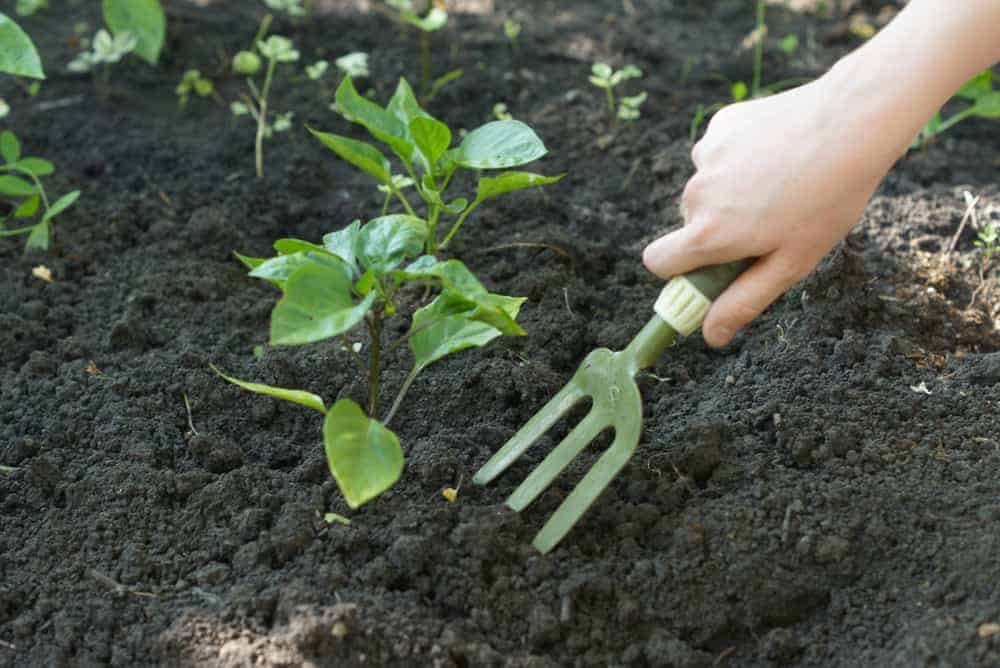
Fortunately, you can easily grow bell peppers from seeds, including green, yellow, orange, red, purple, and dark-brown varieties. In general, you can expect to get mature fruits in approximately two to three months.
Depending on local climate, you can start your veggies in the garden. However, in most cases, it is better sowing seeds indoors from February to April and transplant seedlings when needed.
Start sowing two months before the last frost in spring. In an ideal case, you should provide adequate temperatures above 55 F (13 C), fertile and well-drained soil, and add some natural fertilizer. If the temperatures are from 60 to 80 F (15.5 – 26.5 C), you can expect to see first seedlings after about ten days.
One of the essential things is to prevent too high growth of your seedlings by providing intense light while they are indoors. If you let them grow poorly at an early stage, you can’t expect that the overall health of young plants will be vigorous.
How to Transplant Bell Peppers
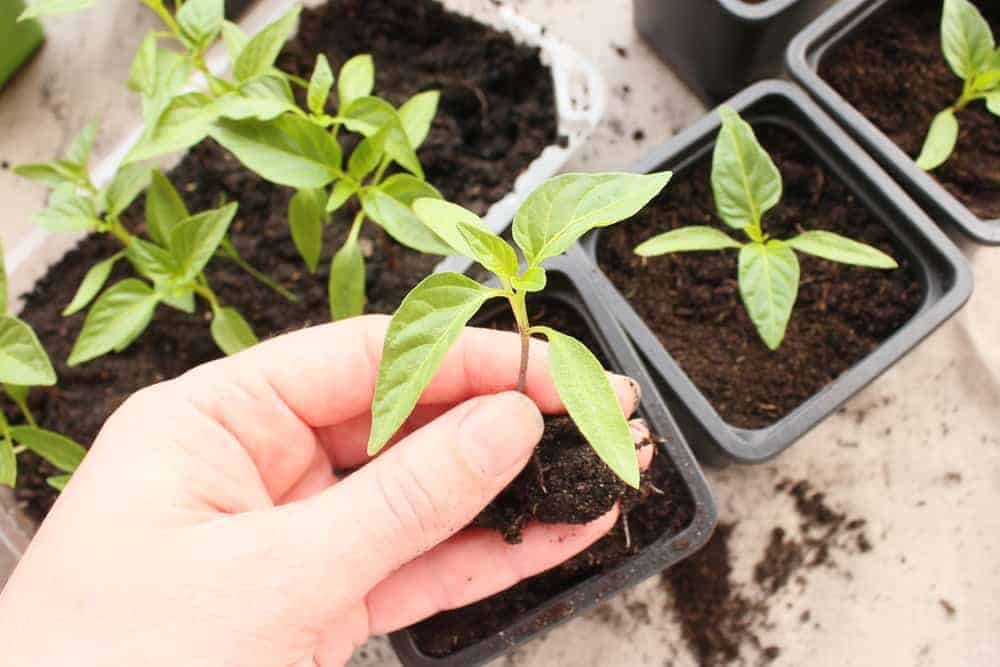
Transplant your seedlings when they get first true leaves and reach 8 inches (20 cm) high. However, you can purchase small seedlings in the greenhouse or garden centers and replant them into your garden.
Don’t miss to harden off them when the temperatures during the night are not high enough. It is always better letting young plants acclimated to new conditions and environment.
The process is simple and means that you should set seedlings outside during a day and to bring them back indoors during the night. After a week, your plants are prepared for a new life, and you can plant them into the garden permanently.
It is especially crucial in colder regions where temperatures are lower than 60 F (15.5 C) overnight. Otherwise, they may grow more slowly.
How to Care Bell Peppers
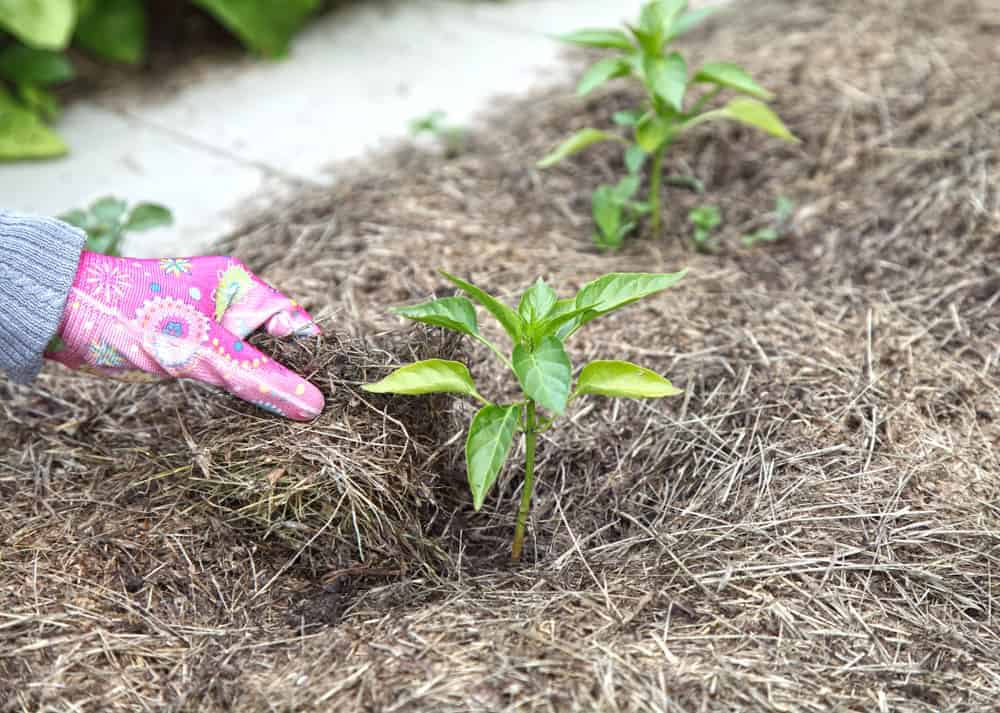
Space
Plant your bell peppers 18 to 24 inches (46 – 61 cm) apart to provide enough light and well airflow for them.
Soil
The best soil for growing this vegetable is sandy or loamy, rich in organic matter, and well-drained. The pH should be from 5.5 to 6. 5, and you need to add some lime to increase it when necessary.
To encourage the growth of your plants in colder regions, you should place black plastic over the ground to keep it warm.
Light
To get largest and healthiest fruits, you need to provide full sun and at least 6 to 8 hours of sunlight for your bell peppers a day. Choose a place in your garden which is not shaded by trees or tall garden plants to plant these veggies.
Temperatures
To force your bell peppers to produce fruits, you need to provide ideal temperatures from 70 to 90 F (21 – 32 C) for them. The lowest temperature during the night, which will these veggies tolerate is 55 F (13 C).
Use wire cages covered with plastic or bell jars to protect your plants from decreasing in temperature. On the other hand, if the temperatures are too high, you will notice that blossoms drop without setting fruits.
Mulching
Since the roots of bell peppers are shallow, you should spread 1 to 2 inches (2.5 – 5 cm) of organic mulch such as straw or chopped leaves around them. That way, you will keep the ground cold, weed-free, and adequately moist.
Watering
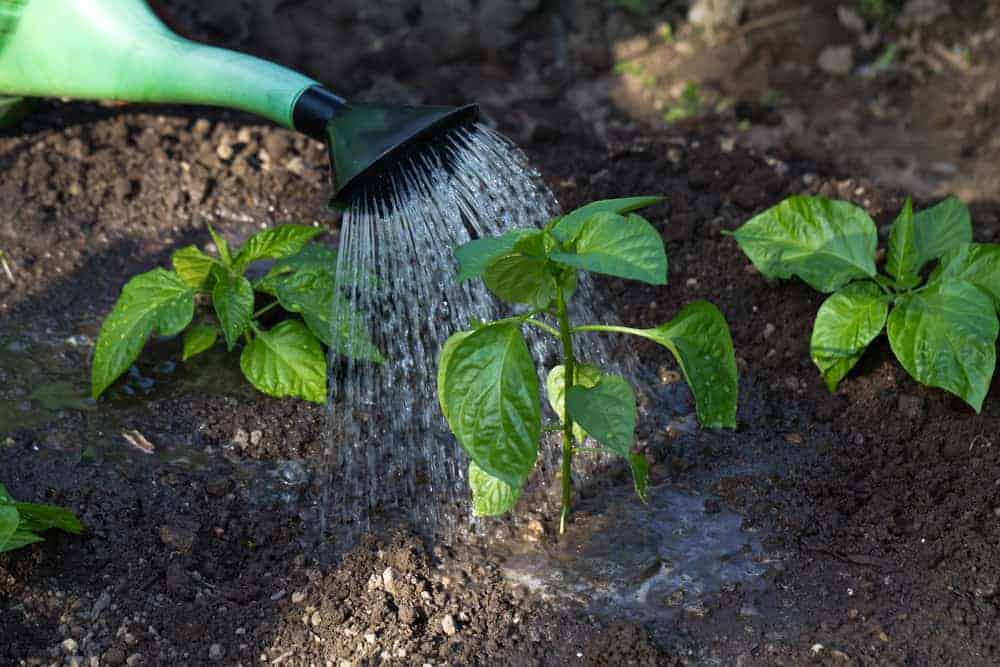
Your bell peppers will need 1 to 2 inches (2.5 – 5 cm) of water per week. However, if you live in a warm region, you may need to water them every day.
Keep veggies evenly moist, especially during blooming and while producing fruits, but avoid soaking the ground. Consistent moisture of the soil approximately 6 inches (15 cm) deep will help your bell peppers stay healthy, luscious, and firm.
Fertilizing
Add aged compost or fertilizer before transplanting seedlings into your garden and after the first set of fruits.
However, take care not to over-fertilize your bell peppers, especially with high-nitrogen fertilizers, because it will encourage the growth of foliage instead of flowers and fruits.
Check if your soil has enough calcium and phosphorus necessary for bountiful growth of this veggie.
Weeding
Weeding is necessary to help your plants thrive and grow healthy and lush. However, be very careful while digging unwanted weeds around your bell peppers since their roots are sensitive.
Using black plastic or spreading mulch around your vegetables is an excellent way to control weeds.
Supporting
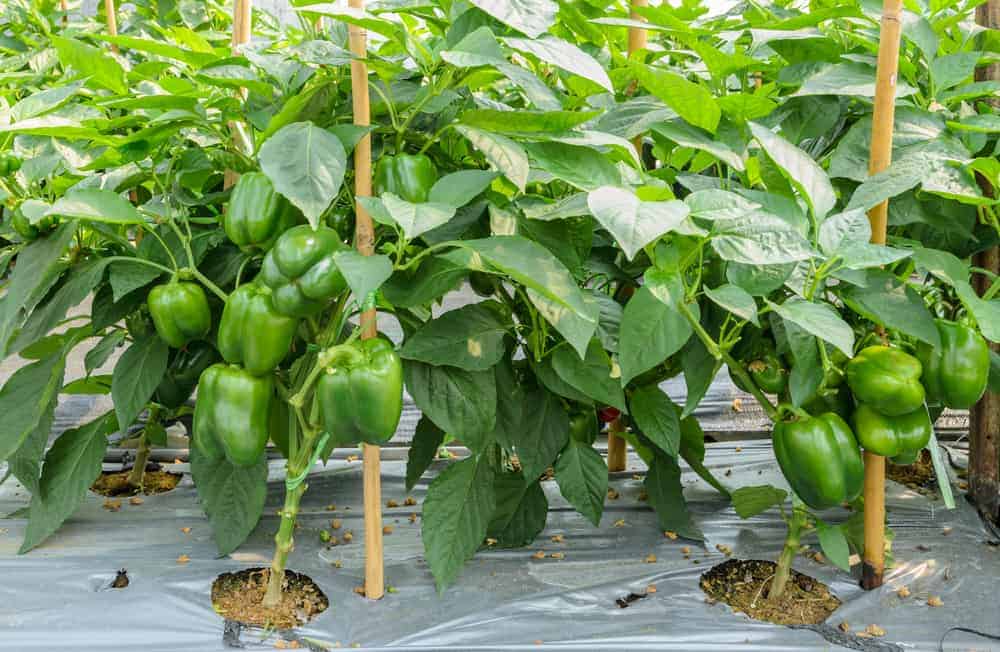
Because the roots of bell peppers are shallow and fruits are quite heavy, you need to provide proper support for your plants. Make a cage or place 3 to 4 feet (0.9 – 1.2 m) long stakes next to the stems to prevent breaking of brittle branches and bending.
How to Harvest Bell Peppers
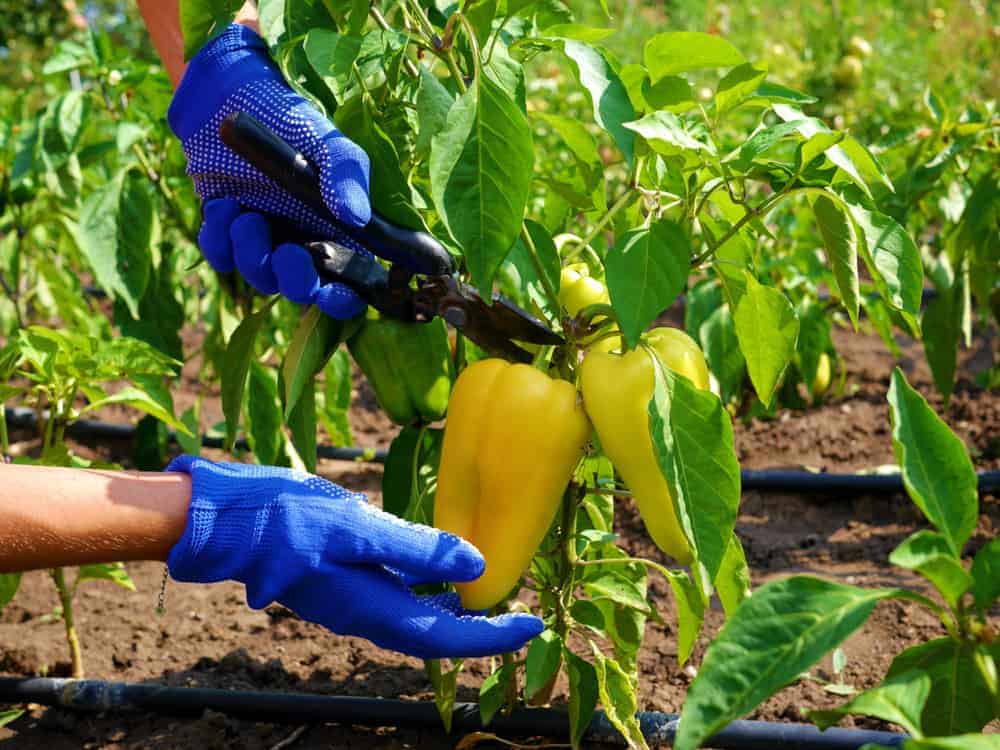
Depending on the variety you choose to grow, your bell peppers will mature two to three months from the moment you transplant them in your garden. It’s up to you to pick up green bells or to let them mature and become colored.
Regular collecting will encourage more pepper fruits to set up. The longer you leave fruits on the stem, they will be sweeter and with a higher content of vitamin C. Once fruits mature, cut them with scissors.
Collect all fruits before the first frost. Since immature bell peppers can taste bitter, add them to the compost pile.
How to Store Bell Peppers
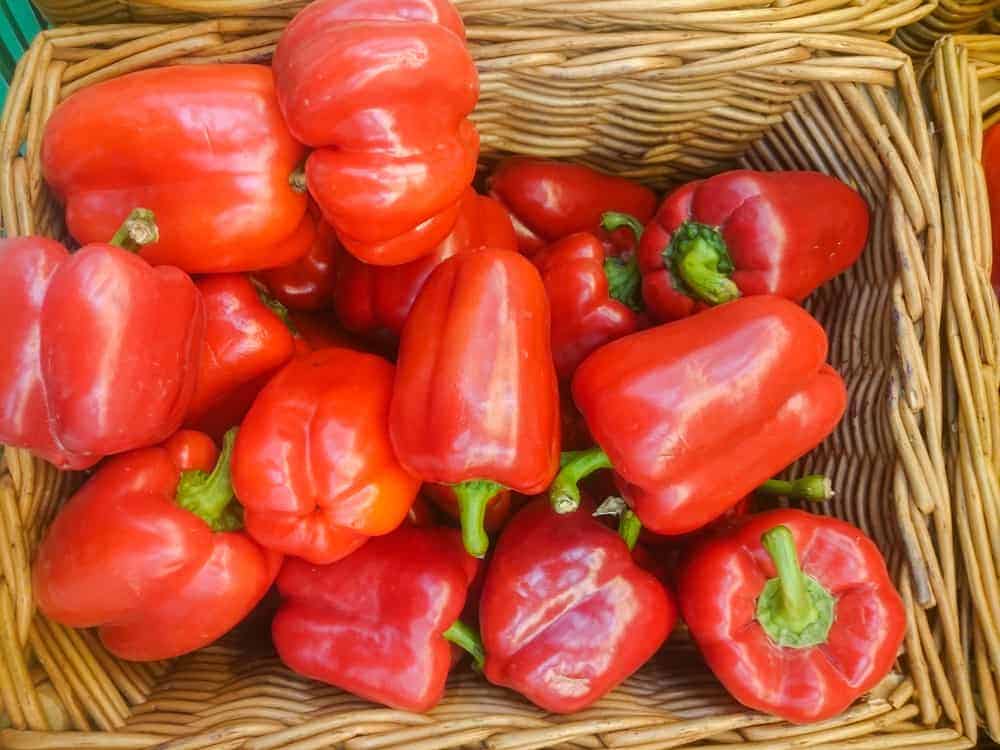
Save your bell peppers in a fridge for up to a week. Take care to dry them before storing to avoid getting moldy fruits. You can also freeze or pickle them.
If cold weather shortens the season, you can pick your bell peppers earlier and keep them in an appropriate place with the temperatures of 68 F (20 C) and the relative humidity over 95%.
In those conditions, they will become entirely red. Once you collect bell peppers, they will start losing water, but they will probably stay firm and flavorful about a month.
You can also dry them in a conventional oven. Cut washed bell peppers into 0.5 inches (1.3 cm) thick strips, steam them for ten minutes, and put them in the oven at 140 F (60 C) until becoming dry. After cooling your bell peppers, put them into a bag and store for winter.
Bell Pepper Pests and diseases
Bell peppers have just a few problems with pests. What’s more, it is enough planting resistant varieties to prevent the most common diseases.
Damping-off
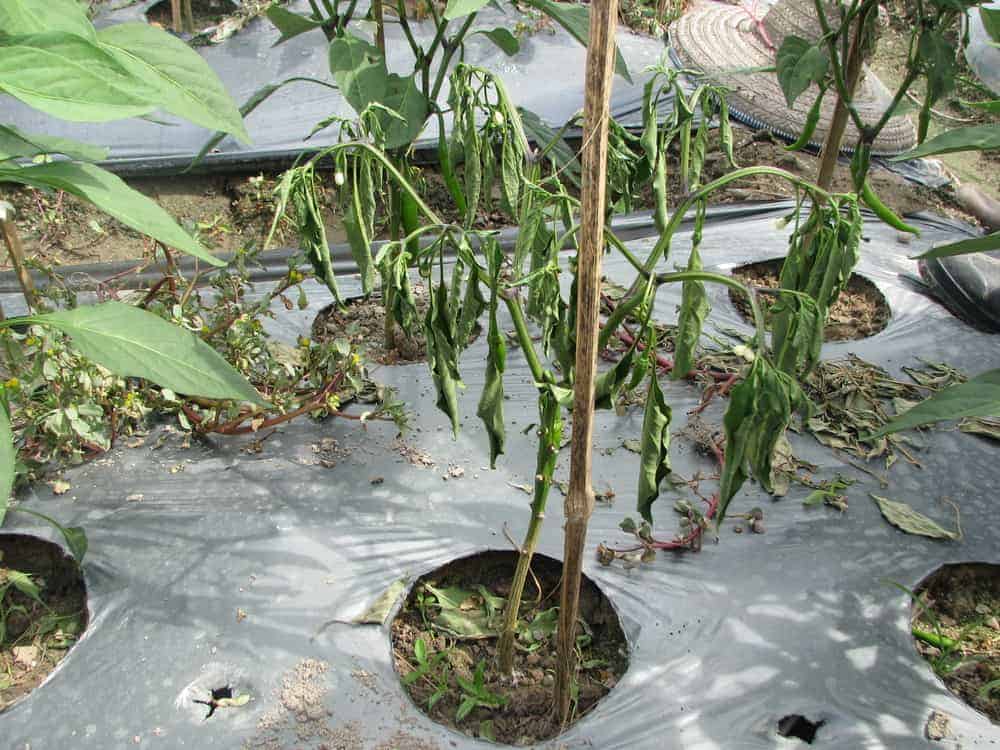
This fungal disease affects seedlings and prevents their growth. Fungi destroy root systems of young plants, but it is possible noticing disease in mature plants as well.
You will face this problem when the temperature of the ground and watering are not optimal. Prevent this disease by planting high quality, fresh seeds, and providing ideal conditions for the healthy growth of the young plants.
Blossom-end rot

When bell peppers don’t get enough calcium and water, you will notice brown or black lesions on the blossom ends and unripe fruits. Also, you can expect this issue when the ground is too soggy and poorly drained. Try to improve the pH of the soil by adding lime soil and increasing the concentration of calcium.
Gray mold
It is a common fungal disease of bell peppers grown in the greenhouse when the humidity is over 85% and air circulation inadequate. You will see olive-green lesions on
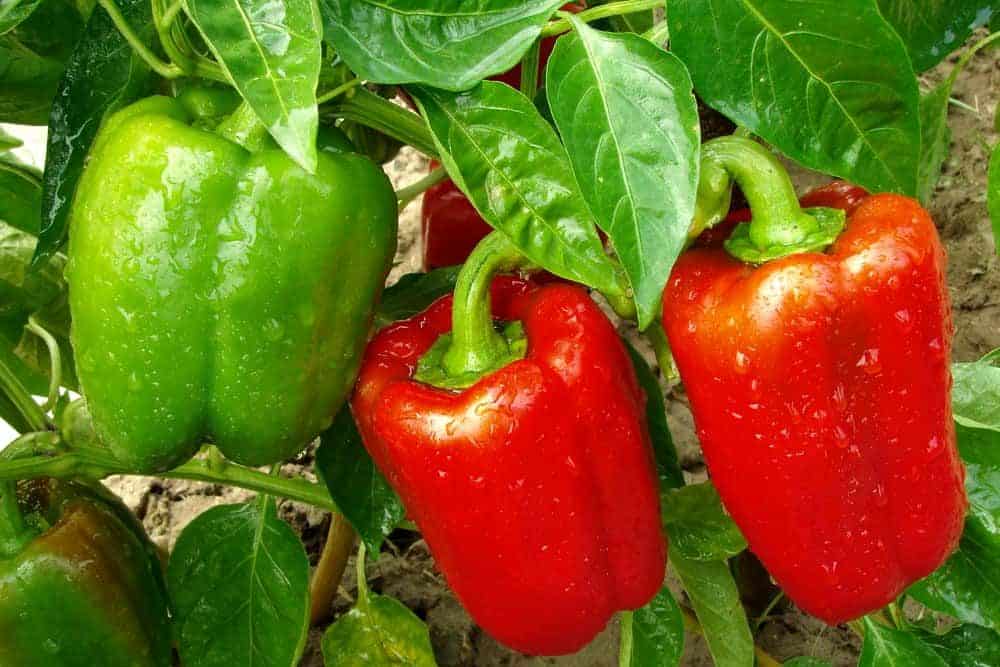
Leave a comment